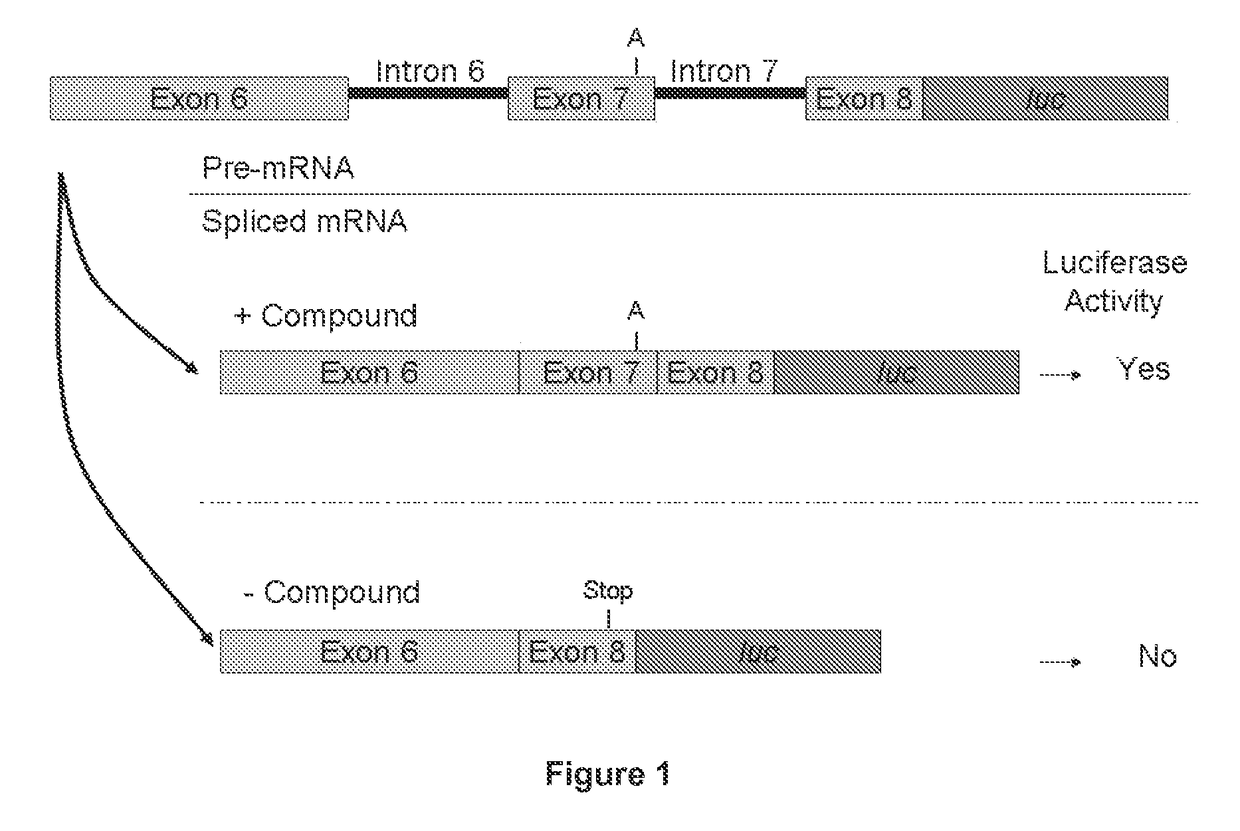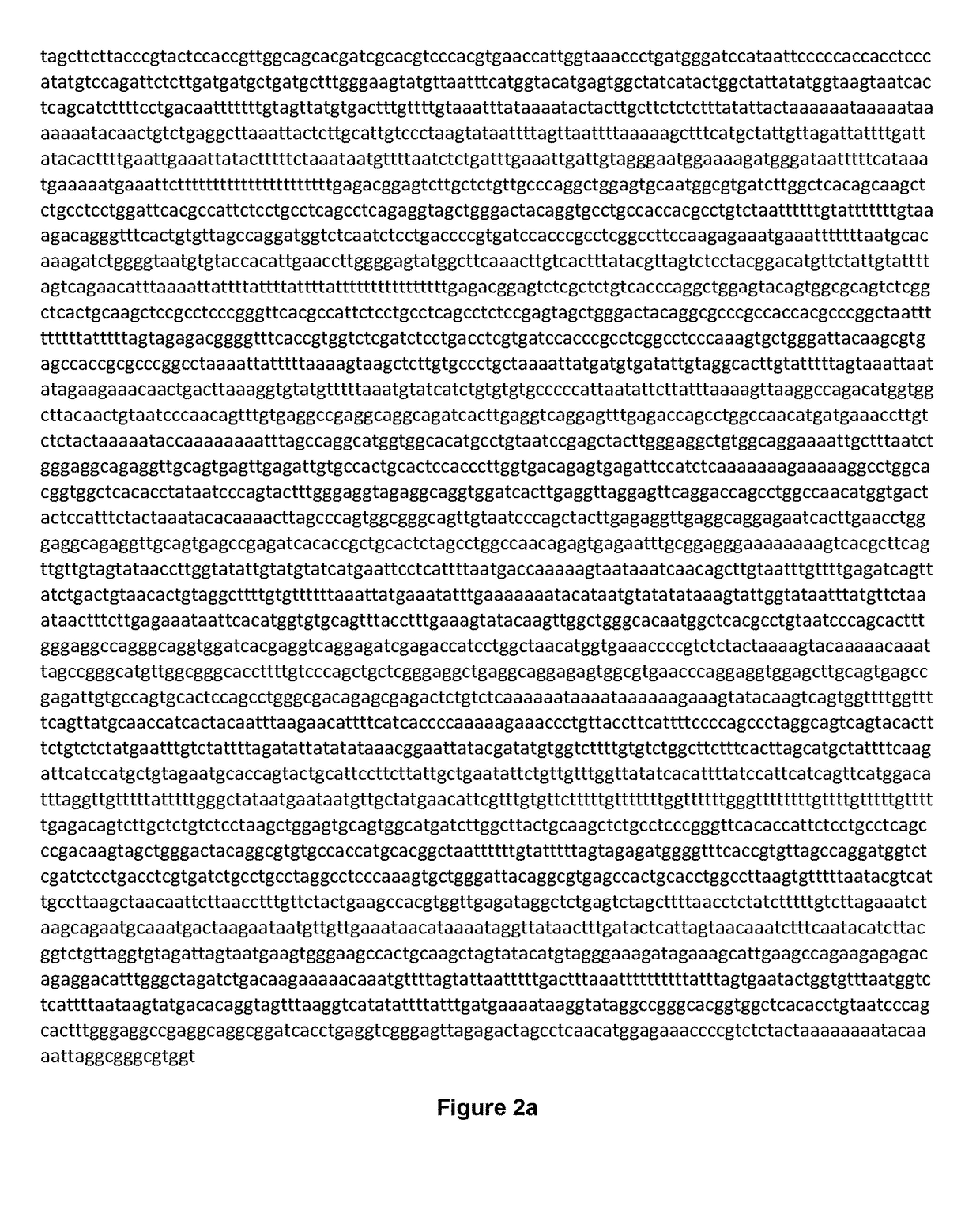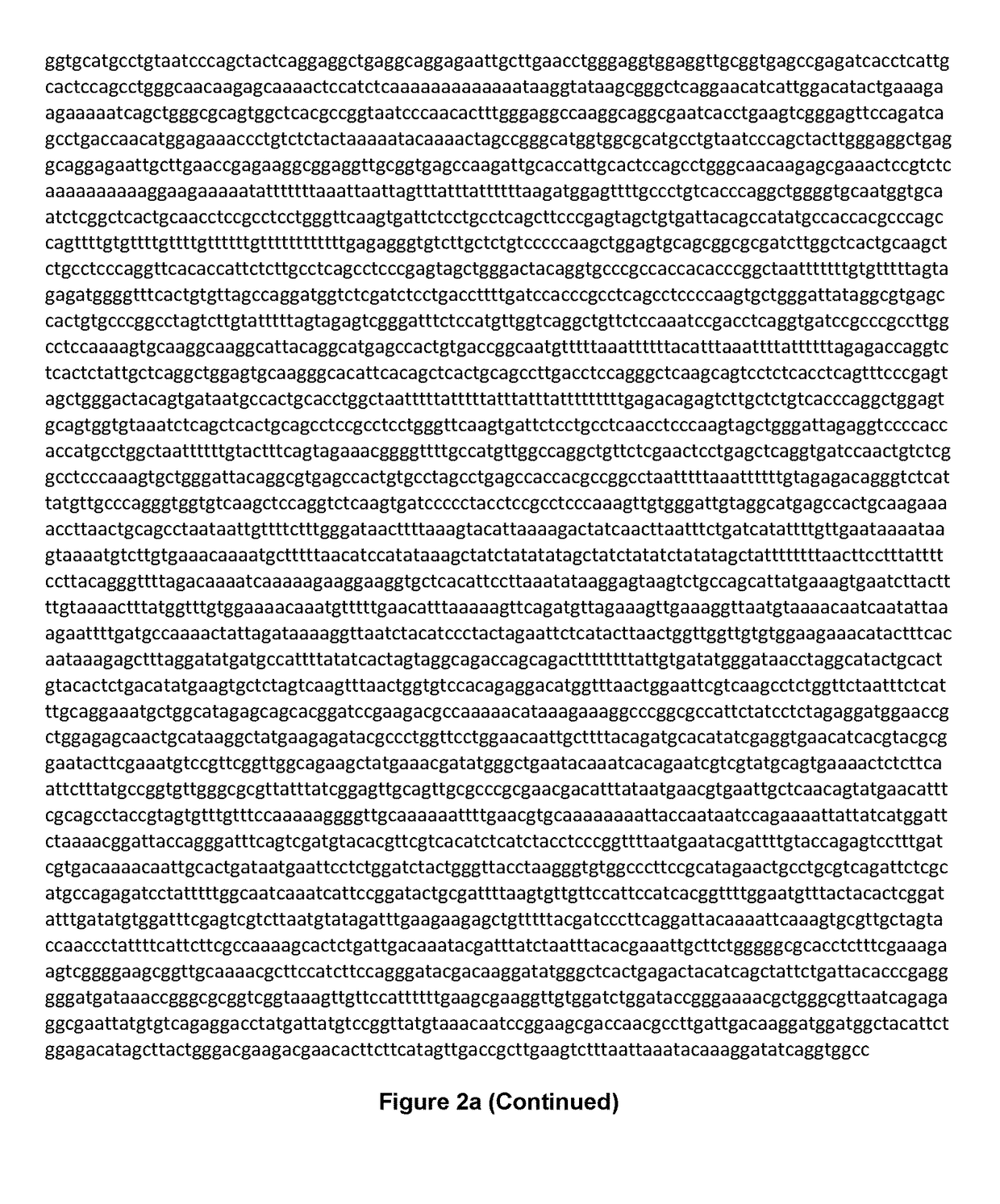Compounds for treating spinal muscular atrophy
a spinal muscular atrophy and compound technology, applied in the field of spinal muscular atrophy compound technology, can solve the problems of weak cry, poor muscle tone, muscle weakness, etc., and achieve the effect of enhancing the inclusion of exon 7 and increasing the level of smn protein produced
- Summary
- Abstract
- Description
- Claims
- Application Information
AI Technical Summary
Benefits of technology
Problems solved by technology
Method used
Image
Examples
example 1
[1474]SMN2 Minigene Construct
[1475]Preparation of the Minigene Constructs
[1476]DNA corresponding to a region of the SMN2 gene starting from the 5′ end of exon 6 (ATAATTCCCCC) (SEQ ID NO. 14) and ending at nucleic acid residue 23 of exon 8 (CAGCAC) (SEQ ID NO. 15) was amplified by PCR using the following primers:
[1477]Forward primer: 5′-CGCGGATCCATAATTCCCCCACCACCTC-3′ (SEQ ID NO. 16), and
[1478]Reverse primer: 5′-CGCGGATCCGTGCTGCTCTATGCCAGCA-3′ (SEQ ID NO. 17).
[1479]The 5′ end of each primer was designed to add a BamHI restriction endonuclease recognition site at both the 5′ end of exon 6 (GGATCC) (SEQ ID NO. 18) and the 3′ end after the 23rd nucleotide of exon 8. Using the BamHI restriction endonuclease recognition sites, the PCR fragment was cloned into a derivative of the original pcDNA 3.1 / Hygro vector which was modified as disclosed in United States Patent Publication US2005 / 0048549.
[1480]New UTRs were added to the modified vector using the HindIII site and the BamHI restriction ...
example 2
[1487]SMN2 Minigene mRNA Splicing RT-qPCR Assay in Cultured Cells
[1488]The reverse transcription-quantitative PCR-based (RT-qPCR) assay is used to quantify the level of the full length SMN2 minigene mRNA containing SMN2 exon 7 in a HEK293H cell line stably transfected with said minigene and treated with a test compound.
[1489]Materials
[1490]
MaterialSourceHEK293H cellsLife Technologies, Inc. (formerly Invitrogen)Catalog No.: 11631-017Cells-To-Ct lysisLife Technologies, Inc. (formerly AppliedbufferBiosystems) Catalog No.: 4399002DMEMLife Technologies, Inc. (formerly Invitrogen)Catalog No.: 11960-04496-well flat-Becton Dickinson Catalog No.: 353072bottom platesRT-PCR EnzymeLife Technologies, Inc. (formerly Applied Biosystems)MixPart No.: 4388520 (also included in AgPath-ID KitCatalog No.: 4387391)RT-PCR bufferLife Technologies, Inc. (formerly Applied Biosystems)Part No.: 4388519 (also included in AgPath-ID KitCatalog No.: 4387391)AgPath-ID One-Life Technologies, Inc. (formerly Applied B...
example 3
[1503]Endogenous SMN2 mRNA RT-qPCR Splicing Assay in Cultured Cells
[1504]The reverse transcription-quantitative PCR-based (RT-qPCR) assay is used to quantify the levels of the SMN2 full length and Δ7 mRNA in primary cells and cell lines containing the SMN2 gene treated with a test compound.
[1505]Materials
[1506]
MaterialSourceSMA Type 1 human cellsGM03813 (Coriell Institute)Cells-To-Ct lysis bufferLife Technologies, Inc. (formerly Applied Biosystems) CatalogNo.: 4399002DMEMLife Technologies, Inc. (formerly Invitrogen) Catalog No.: 11960-04496-well flat-bottom platesBecton Dickinson Catalog No.: 353072RT-PCR Enzyme MixLife Technologies, Inc. (formerly Applied Biosystems) Part No.:4388520 (also included in AgPath-ID Kit Catalog No.: 4387391)RT-PCR bufferLife Technologies, Inc. (formerly Applied Biosystems) Part No.:4388519 (also included in AgPath-ID Kit Catalog No.: 4387391)AgPath-ID One-Step RT-Life Technologies, Inc. (formerly Applied Biosystems) CatalogPCR KitNo.: 4387391Thermocycle...
PUM
| Property | Measurement | Unit |
|---|---|---|
| weight | aaaaa | aaaaa |
| median weight | aaaaa | aaaaa |
| temperature | aaaaa | aaaaa |
Abstract
Description
Claims
Application Information
 Login to View More
Login to View More - R&D
- Intellectual Property
- Life Sciences
- Materials
- Tech Scout
- Unparalleled Data Quality
- Higher Quality Content
- 60% Fewer Hallucinations
Browse by: Latest US Patents, China's latest patents, Technical Efficacy Thesaurus, Application Domain, Technology Topic, Popular Technical Reports.
© 2025 PatSnap. All rights reserved.Legal|Privacy policy|Modern Slavery Act Transparency Statement|Sitemap|About US| Contact US: help@patsnap.com



